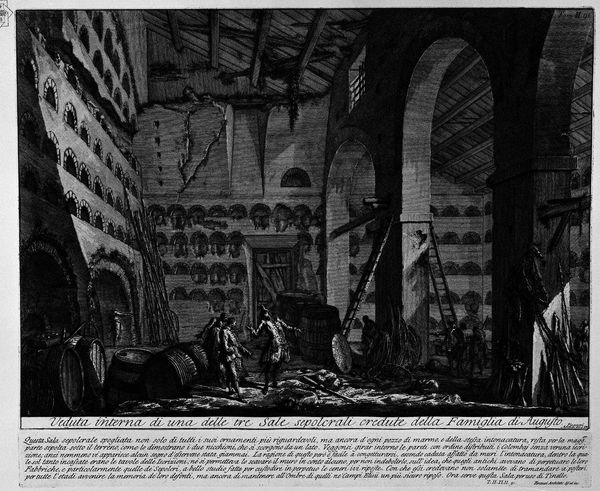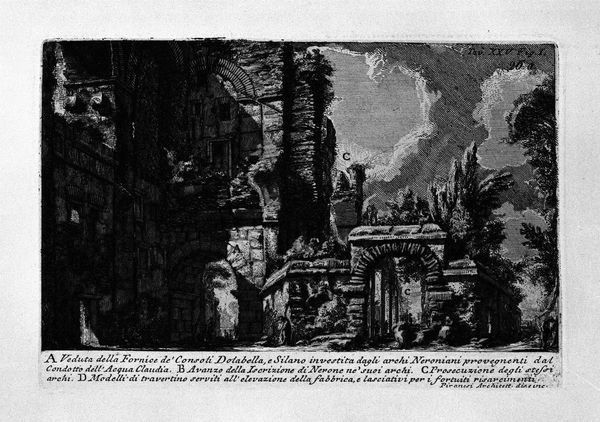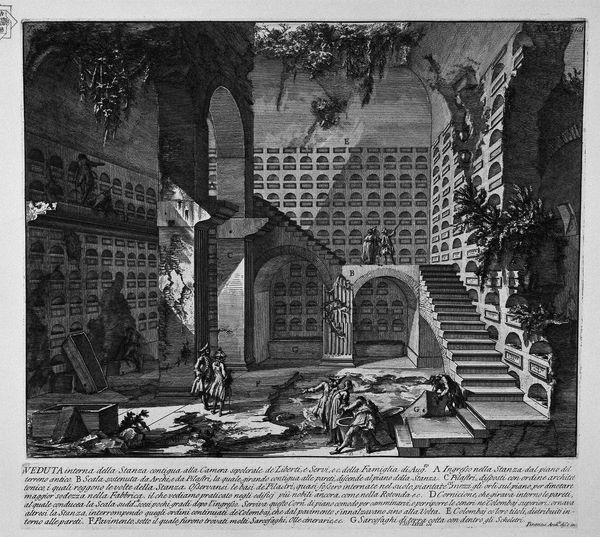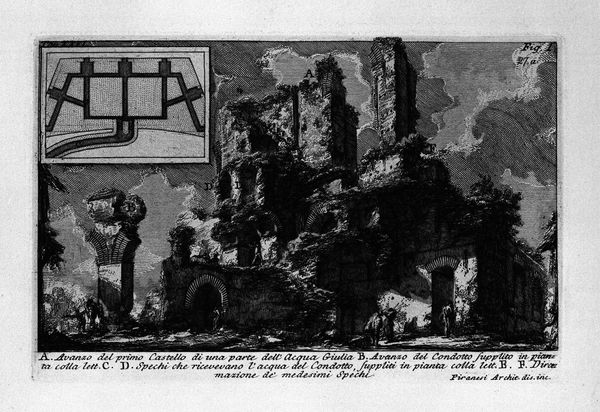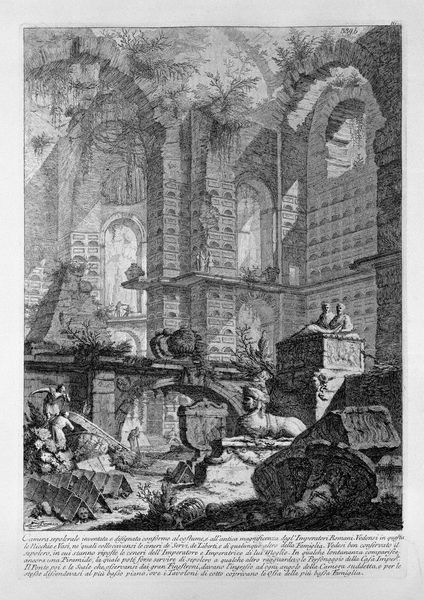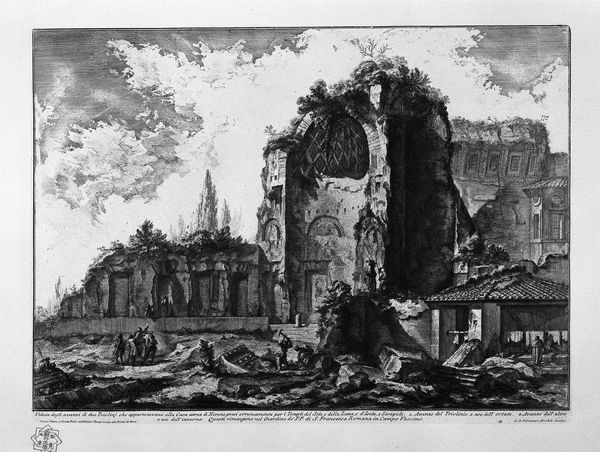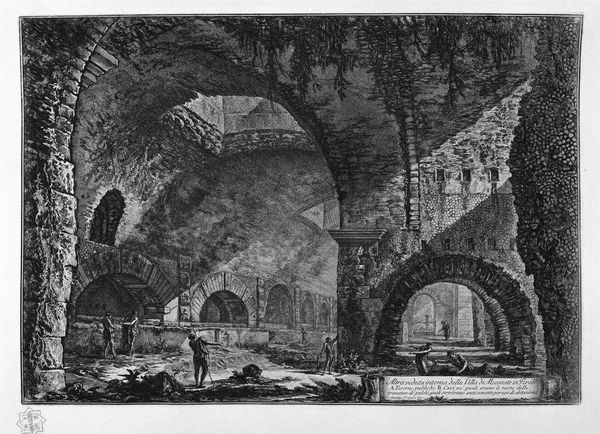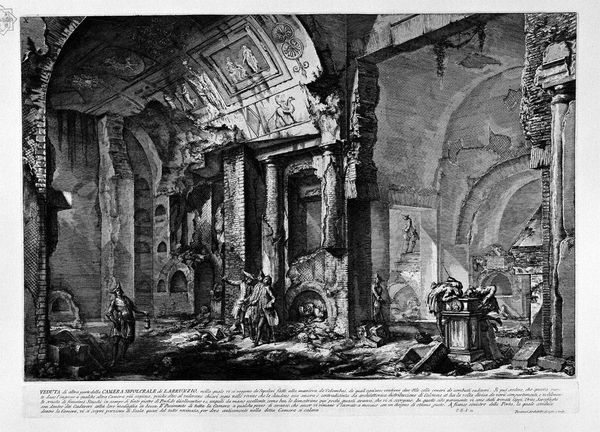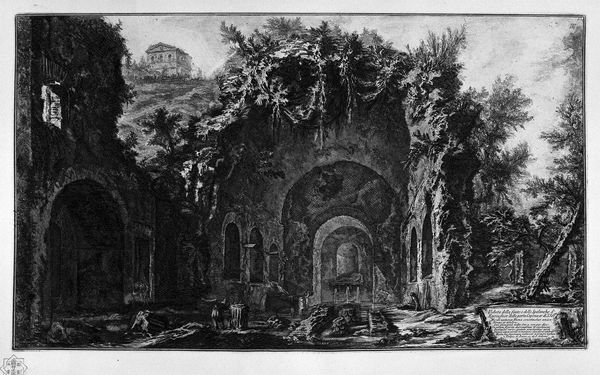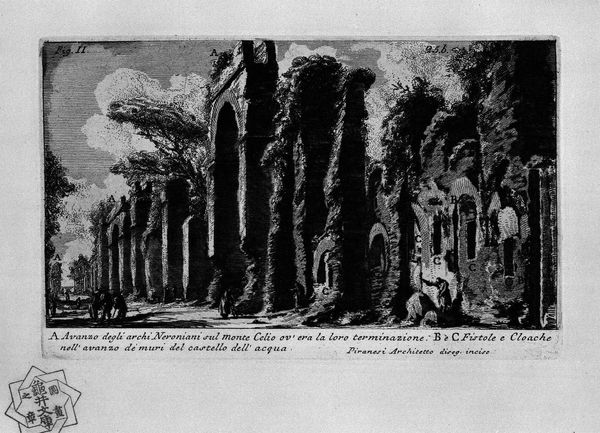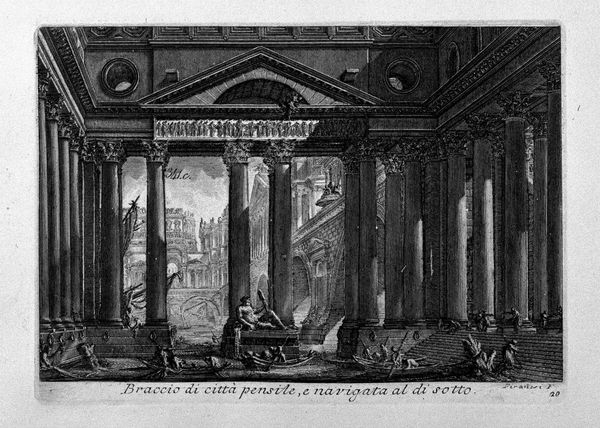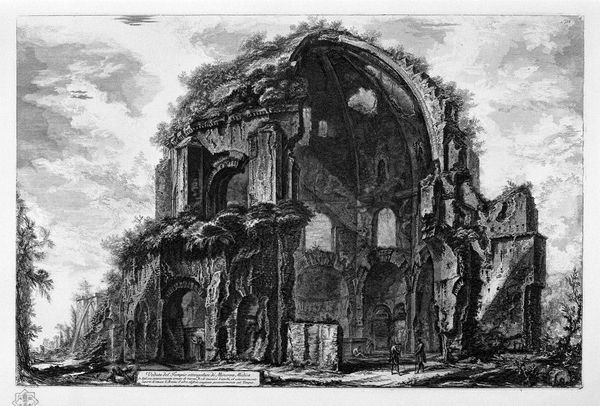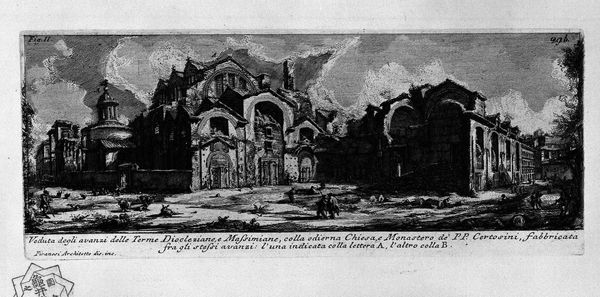
The Roman antiquities, t. 2, Plate LVI. Interior view of the burial chamber in the Vineyard Gate S. Casali Sebastiano.
0:00
0:00
drawing, print, etching, engraving, architecture
#
drawing
# print
#
etching
#
landscape
#
form
#
romanesque
#
column
#
black and white
#
line
#
engraving
#
architecture
#
monochrome
Copyright: Public domain
Curator: Let's discuss this intriguing etching by Giovanni Battista Piranesi: "The Roman antiquities, t. 2, Plate LVI. Interior view of the burial chamber in the Vineyard Gate S. Casali Sebastiano." The use of line work is absolutely mesmerizing, don't you think? Editor: It has a striking theatrical feel, like looking at a stage set. The figures almost seem posed, interacting with the ruins and structures, with an overall focus on the human element within it. The scale is surprising; the architecture seems monumental yet decaying, made somehow fragile. Curator: Exactly, the materiality is really what gets me. This isn't just about representation; Piranesi emphasizes the physical reality of these structures through the labour implied in depicting them. Look at how he meticulously rendered each stone, the cracks, the crumbling details; how he conveys how light interacts with varied stone and plaster textures. What means of production were at play to shape this architecture in real life and what labors are at work within the image's world? Editor: That focus makes me think about the socio-political forces that were acting in eighteenth century understandings of classical antiquity. Piranesi presents these Roman ruins not just as remnants of a lost civilization, but as powerful cultural signifiers shaping contemporary identities. Curator: Indeed! And Piranesi also calls into question what should and should not last and how materials are shaped, broken and recovered through labor. By emphasizing materiality, labor, and the changing state of the materials, he transforms how we engage with ruins, no longer simply as nostalgic symbols but as active, working parts of the world, subject to forces of decay and transformation. Editor: In a way, he’s preempting the modern obsession with ruins and decay. The scene presented has a romantic vision that finds beauty in abandonment. The people within this ruined architecture also provide commentary. There's a stark contrast to his time through the decay, though not quite a total condemnation or a simple celebration of what was, but complex reflection. Curator: It all makes one contemplate not only the history etched into these stones but also the artistic labor embedded in translating this experience through ink on paper, which then further emphasizes the transformation and change occurring on these architectural sites through use. Editor: Right, and maybe to conclude: seeing it as both a record and an artistic intervention gives Piranesi’s work that lasting power.
Comments
No comments
Be the first to comment and join the conversation on the ultimate creative platform.
